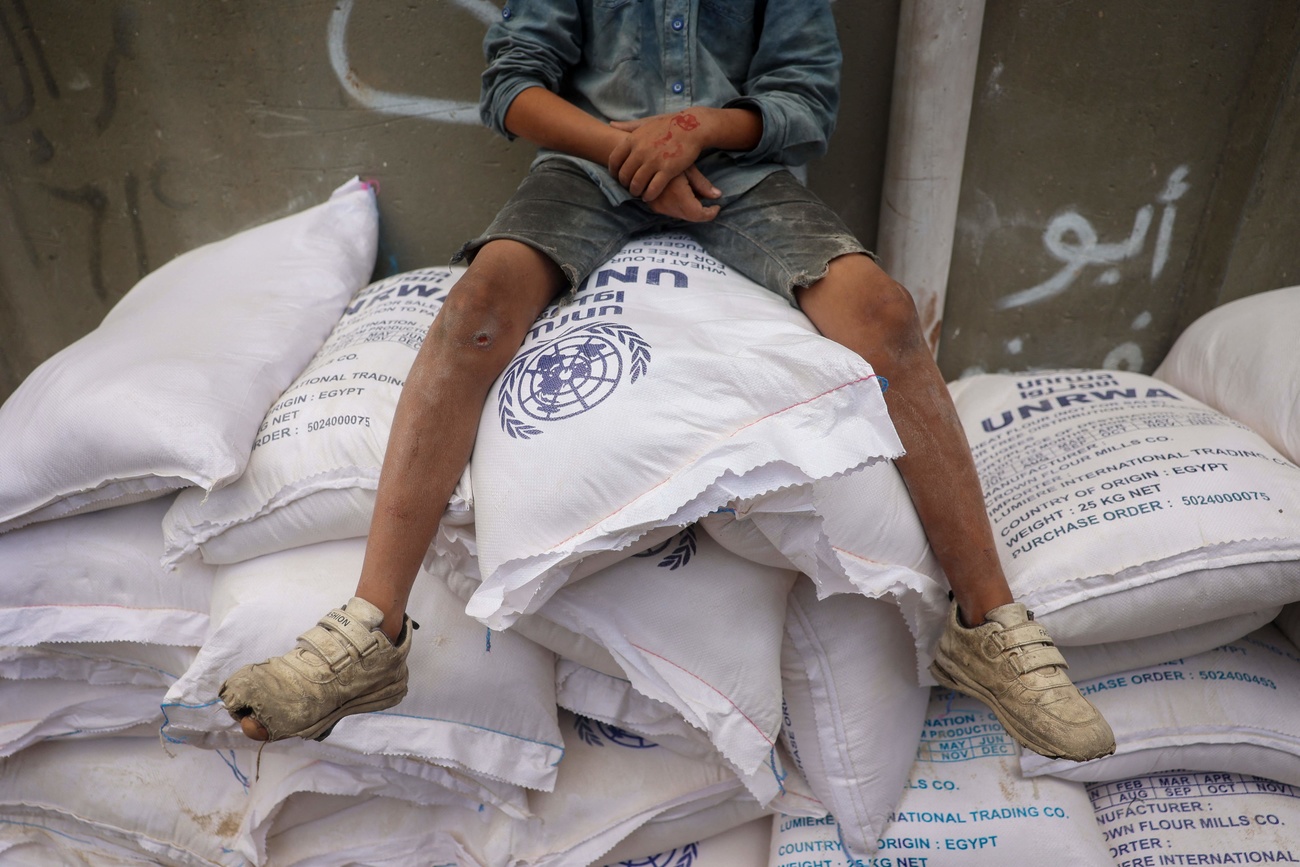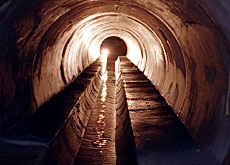Urine could hold secret to crop fertilisation

No longer of use to the body that excretes it, urine is getting a second life in the form of fertiliser thanks in part to Swiss engineers.
The Swiss Federal Institute of Aquatic Science and Technology (Eawag) has teamed up with specialists in South Africa to convert human urine into fertiliser.
“We treat the urine and extract the nitrogen, phosphorus and potassium in a powder form. Our idea at the moment is to granulate this powder so that we have granules like normal fertiliser, which can be spread on the fields,” explained Eawag process engineer Kai Udert.
The phosphorus found in urine is particularly precious. Plants need it in order to thrive, yet it is becoming rare. Typically, phosphorous is mined, yet experts have predicted that the world supply will run out within the next 50-100 years – making crop fertilisation a challenge.
Last month, the Eawag project received $3 million (SFr2.9 million) in grant money from the Bill & Melinda Gates Foundation. The money will support Eawag and its partner, the eThekwini Water and Sanitation utility (EWS) in South Africa, in their quest to continue developing practical, community-scale, nutrient recovery systems.
As Udert told swissinfo.ch, the grant will help them research the technical, economic and social aspects of the project so that they can better understand how to treat the urine and how to implement the system in the developing world.
“The idea is that somebody could collect the urine, produce fertiliser with it and make some money from it,” Udert said.
Potty training
Central to the project are the toilets themselves. Referred to as “dry urine dividing toilets”, they are not hooked up to any kind of central sanitation system. The bowls have two compartments – making it possible to collect the urine separately from the faeces.
The delicate part is finding someone up for the task of dealing with the tank. According to Udert, there is a stigma attached to human waste in some parts of the world. Yet the real issue is the stink.
“When you store urine, it’s really smelly – so you don’t want to use it just like that. It’s also not good for the environment because what smells is the ammonia. In our process we want to fix the ammonia and nitrogen in the solution and actually remove all of the water so that in the end we only have the solids,” Udert said.
In addition to processing the urine and converting it into fertiliser, Udert and his team hope to improve hygiene conditions in developing countries.
“Worldwide we have a large problem with sanitation and the centralised systems we have here in Switzerland and other developed countries aren’t applicable in many places in the world,” he said.
Humanitarian angle
Eawag has done a lot of research work in Nepal, where many people do not have access to a toilet. Its project in Siddhipur near Kathmandu has demonstrated that urine can help to close the regional nutrient cycle, while farmers participating in the scheme also benefit since they do not need to buy as much imported chemical fertiliser.
“When they get a toilet, it should be one that works well – one that they are comfortable using,” Udert added.
Carolien van der Voorden is the Networking and Knowledge Management Officer of the Water Supply and Sanitation Collaborative Council (WSSCC), based in Geneva. She agrees that such nutrient recovery projects can work well, but emphasises that health should be the focus.
“The main reason to try to promote sanitation is to limit the risk of infection and to give people a healthier and more dignified life,” she told swissinfo.ch, pointing out that 800 million people relieve themselves out in the open.
Some are so accustomed to it that latrine and toilet projects fail because there is too little local interest.
“It’s not building a toilet that’s the difficult thing – it’s changing people’s behaviour. Sanitation has to be linked with hygiene education programmes,” van der Voorden said.
She noted that in rural areas, waste recycling programmes tend to enjoy a good success rate because the locals can appreciate the value. Eawag’s South Africa project, scheduled to last four years, is still in the early stages. Udert is optimistic that it will be a success, too.
“Urine contains most of the nutrients that are needed, so based on its composition, we are pretty confident that this will be a good fertiliser.”
Forty per cent of the world’s population do not have access to toilets.
Every year 1.8 million people die as a result of poor sanitation.
Disease spreads when faecal material seeps into the groundwater or flows into streams from where people take their drinking water.
Cholera, typhoid and dysentery are three diseases caused by drinking contaminated water.
In the 19th century hundreds of thousands of people died in Europe in three major waves of cholera.
Until the late 19th century it was widely believed that cholera was carried in the air.
The cholera bacillus was discovered in 1854 by the Italian Filippo Pacini but he was ignored; it was rediscovered in 1883 by the German doctor Robert Koch.
Public Health acts and the installation of sewage and sanitation facilities put an end water-borne diseases.
(With input from Tim Neville)

In compliance with the JTI standards
More: SWI swissinfo.ch certified by the Journalism Trust Initiative














You can find an overview of ongoing debates with our journalists here . Please join us!
If you want to start a conversation about a topic raised in this article or want to report factual errors, email us at english@swissinfo.ch.